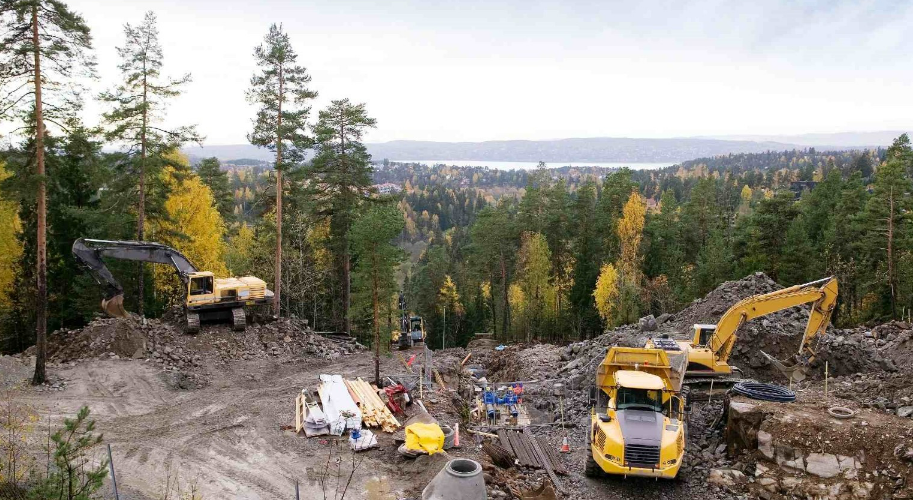Exploring the Costs and Benefits of Construction Equipment Ownership
Where precision and efficiency are paramount, choosing to own construction equipment is critical for businesses of all sizes.
Whether it’s bulldozers or excavators, these heavy-duty machines present a range of costs and benefits that directly impact a company’s bottom line and operational efficiency. We look into the intricacies of construction equipment ownership.
Understanding the Costs
1. Initial Capital Investment
Investing in new or used construction equipment significantly influences the initial capital outlay. New machinery often comes with the latest technological features but commands a higher price, while used equipment typically offers a more affordable entry point. Companies must carefully weigh the benefits of cutting-edge technology against the cost considerations associated with new equipment.
You can also explore financing and leasing options to alleviate the immediate financial burden of the initial capital investment. This approach allows businesses to spread the costs over time, providing more flexibility in managing cash flow and working capital. Understanding the fine print of financing agreements is essential for making informed ownership decisions.
2. Depreciation
Construction equipment, like any other asset, undergoes depreciation over time. Factors such as usage intensity, maintenance practices, and market conditions influence the depreciation rate. Identifying these factors is crucial for accurate financial forecasting and budgeting.
Creating and adhering to a depreciation schedule is also vital for financial planning. Additionally, understanding the tax implications associated with equipment depreciation allows businesses to optimise their tax positions. Consulting with financial experts and tax professionals can provide valuable insights into maximising tax benefits.
3. Maintenance and Repairs
The costs associated with maintenance and repairs are inevitable in equipment ownership. A hands-on preventive maintenance strategy reduces the chances of irreversible breakdowns and extends the machinery’s lifespan. This approach minimises costly repairs that may arise from neglect or delayed maintenance.
Despite preventive measures, unforeseen repairs may still occur. Businesses should allocate a budget for emergency repairs to address unexpected issues promptly. This contingency fund helps mitigate the financial impact of sudden equipment breakdowns, keeping projects on schedule.
4. Insurance and Taxes
Construction equipment ownership necessitates comprehensive insurance coverage to protect against potential risks, including accidents, theft, and damage. Businesses should carefully evaluate insurance policies, considering coverage limits, deductibles, and specific risks relevant to their operations.
Property taxes and other tax obligations associated with owned equipment also require meticulous attention. Understanding the tax implications of equipment ownership and ensuring compliance with relevant regulations is critical in managing ownership costs.
5. Operational Costs
Businesses must consider ongoing operational expenses. Fuel, operator wages, and consumables (such as lubricants and replacement parts) contribute to the overall cost of equipment ownership. Monitoring and optimising these operational costs are essential for maintaining profitability and competitiveness.
On top of that, implementing efficiency measures, such as optimising equipment usage, investing in fuel-efficient technologies, and adopting cost-reduction strategies, can help mitigate operational costs. Continuous monitoring and adjustment of operational practices contribute to a cost-effective approach to equipment ownership.
Analysing the Benefits
1. Operational Efficiency
Ownership ensures that construction equipment is available on demand, eliminating the need to coordinate with rental companies and mitigating the risk of downtime due to unavailability.
Additionally, scheduling and deploying owned equipment according to project timelines allows for better project management. Construction firms can optimise their schedules, reducing idle time and enhancing overall project efficiency.
2. Cost Control
While the upfront investment may seem daunting, owning construction equipment gives businesses a more predictable long-term cost structure. This stability in costs facilitates better financial planning and budgeting.
Rental costs can also fluctuate based on market demand and availability. Equipment ownership eliminates the uncertainties of rental pricing, offering businesses greater control over their budgetary considerations.
3. Customisation and Familiarity
You can customise owned equipment to meet specific project requirements. This level of customisation ensures that the machinery is precisely suited to the job at hand, enhancing efficiency and project outcomes.
Additionally, familiarity with owned equipment translates to higher operator expertise. Trained personnel can maximise features and capabilities, increasing efficiency and safer operation.
4. Resale Value
Businesses can strategically manage their asset portfolio by considering the potential resale value of owned equipment. Regular maintenance and proper care help preserve resale value, turning the equipment into a valuable asset rather than a sunk cost.
On top of that, the ability to sell or trade-in owned equipment provides flexibility in upgrading to newer models with enhanced features. This adaptability ensures that businesses stay competitive by incorporating the latest technological advancements in construction equipment.
Strategic Considerations
1. Project Durations and Frequency
Assessing the duration and frequency of projects is crucial when deciding on equipment ownership. For businesses engaged in long-term, continuous projects, owning equipment becomes more economically viable than relying on frequent rentals.
Conversely, for companies involved in sporadic or short-term projects, a more flexible approach, such as rental or leasing, might be preferable to avoid long-term ownership commitment and maintenance costs.
2. Technology and Innovation
When considering equipment ownership, businesses must balance embracing innovation for enhanced efficiency and avoiding overinvestment in features that may quickly become outdated.
Understanding the lifecycle of construction technology is crucial for future-proofing investments. Evaluating the potential for upgrades and compatibility with emerging industry standards ensures that owned equipment remains relevant and competitive.
3. Maintenance and Training
Implementing a proactive and comprehensive maintenance program is essential for extending the lifespan of owned equipment. Regular inspections, timely repairs, and adherence to manufacturer recommendations minimise unexpected breakdowns and associated costs.
Operator training programs also ensure safe and efficient equipment use. Investing in ongoing training for operators enhances job site safety and maximises the productivity and longevity of owned machinery.
Where timelines are tight, owning construction equipment is a strategic decision beyond simple financial considerations. While the costs associated with ownership are undeniable, the operational benefits and strategic advantages can position businesses for long-term success.

